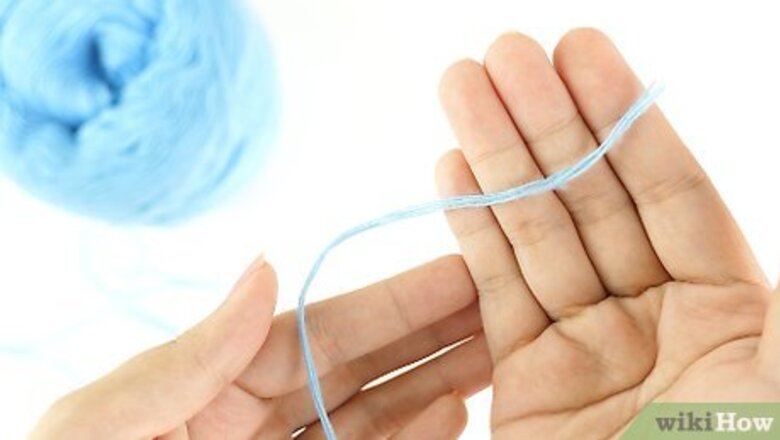
views
Making a Foundation Chain
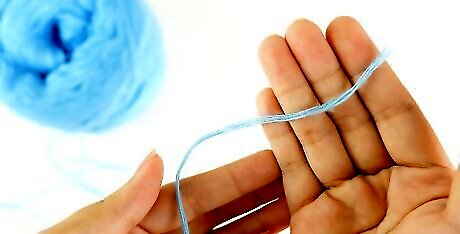
Choose worsted weight cotton yarn. You'll need a 4-ounce (113 g) skein of worsted weight yarn or #4 yarn like afghan or aran yarn. Look for yarn made from all cotton since acrylic yarn can melt if you set a hot pan on it. Pick a solid yarn or get multi-colored yarn for a vibrant potholder.
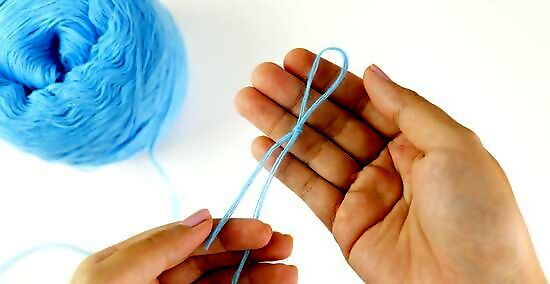
Make a slip knot. Pull a length of yarn and twist the end into a loop. Slide your thumb and forefinger into the loop and use them to grab the yarn tail. Hold the working yarn with your other hand so you can pull the tail through the loop near its center or near the loop-side of the tail. Gently pull the working yarn to close the loop around the tail as you pull it through to make another loop. If you're new to making slip knots, practice a few times. To tell if you've correctly made a slip knot, keep pulling the yarn in opposite directions. The knot should come undone instead of tightening.

Slide the knot onto a size US G (5 mm) crochet hook. Slip the knot onto the crochet hook and pull the yarn until it's snug around the hook. Don't pull too tightly or you'll have a hard time making your foundation chain.
Make 35 chain stitches to create a foundation chain. Take the working yarn that's attached to the skein and wrap it once around your crochet hook. Bring the hook through the loop to make 1 chain. Then, repeat this to make a total of 35 chain stitches, which should be around 10 inches (25 cm) long. This makes the foundation or bottom edge for your potholder. Although gauge doesn't matter very much for this project, you may want to crochet tighter if your chain is longer than 10 inches (25 cm) or make looser stitches if your chain is too short. EXPERT TIP Sarah Stearns Sarah Stearns Crochet Expert Sarah Stearns is a DIY Specialist, Artist, Maker, Blogger, and the Founder of SarahMaker.com. With over ten years of experience, she specializes in fun, approachable crafts like crocheting, making polymer clay jewelry, quilting, and creating Cricut projects. Her work has been featured in several publications, such as Scientific American, Good Housekeeping, Vox, and Apartment Therapy. Sarah holds a BA in Psychology from Vanderbilt University. Sarah Stearns Sarah Stearns Crochet Expert Find the right crochet projects for beginners. Start with small crochet projects like potholders or scarves that are stitched in easy, flat rows. Once you feel comfortable working in flat rows, you can move on to crocheting in the round by tackling fun projects like granny squares for a blanket or a basic beanie hat.
Single-Crocheting the Potholder

Make a single crochet (SC) into the foundation chain. Insert your hook into the chain stitch that's closest to the hook and wrap the yarn around it once. Bring the hook back through the chain so you have 2 loops on the hook. Wrap the yarn around the hook 1 more time and pull your hook through the 2 loops to create 1 single crochet stitch. The single crochet stitch is one of the fastest crochet stitches to work, so this potholder comes together quickly.

Single crochet until you reach the last stitch on the foundation. Keep making a single crochet stitch into each chain. Stop crocheting when there's just 1 chain left on the foundation. This means you'll make a total of 34 SC stitches on this side of the foundation chain.
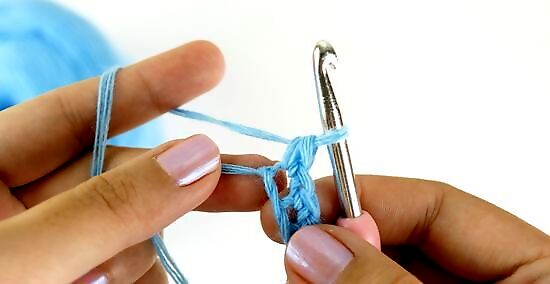
Make 2 single crochet stitches in the last stitch to make a corner. Once you're at the last chain on the foundation, make a SC stitch. Then, insert your hook into the same chain stitch and make another SC stitch into it. This makes a slight curve that forms the corner of your potholder.

Single crochet every stitch along the other side of the chain. Now that you've curved the end of your foundation, you can crochet into the back loops of the chain. Make a SC stitch into the back of each stitch until you reach the other end of the row. You'll make 35 SC stitches along the back of the foundation chain. This completes the first full row of SC. It's really important that you don't join the rows and turn the work. Instead, remember to SC into the back loops.
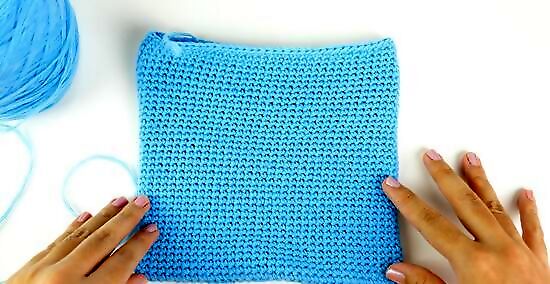
Continue to SC back and forth until your potholder is an 8 to 9 in (20 to 23 cm) square. You don't need to make extra SC stitches in the corners since you've already established them. Just remember to keep making SC stitches into the stitches of the SC row immediately before it, rather than into the chain stitches. Depending on your tension, you'll need to knit around 40 rows of SC with 71 stitches each. When your potholder is at least 8 inches (20 cm) square, work to the end of the last row you'd like to complete. This makes 2 layers of fabric, which form the double-thick potholder.
Finishing Your Potholder
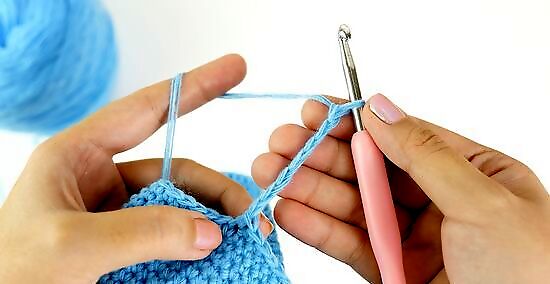
Make 7 chain stitches to form a hanging loop. When you reach the corner and your potholder is as big as you like, make 7 chain stitches. This makes a short length of fabric that you'll use to make a loop for hanging up your potholder when you're not using it.

Attach the loop to the potholder with a slip stitch. Keep the last loop of your chain on your hook and push your hook into the corner of your potholder. To join the loop to the potholder, grab the working yarn with your hook. Pull it through the loop and then pull it through the stitch on your hook. If you don't want your potholder to have a hanging loop, just skip these steps and tie off your working yarn.
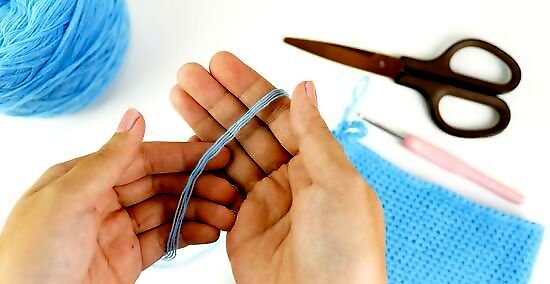
Cut a 2 ft (61 cm) yarn tail and tie off the yarn. Leave a long yarn tail that you can use to sew the top of the potholder closed. Before you sew it closed, however, bring the yarn through your last stitch and make a knot. If you forget to leave a long yarn tail, just tie a 2 ft (24 in) length of yarn to the end of your yarn tail and use it to sew the potholder shut.
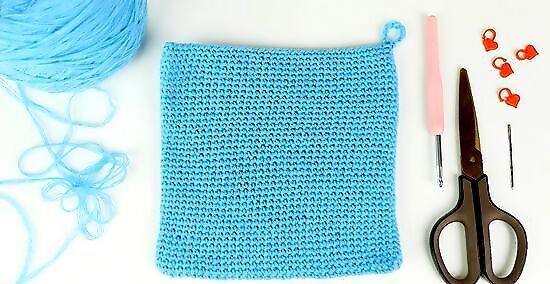
Thread a tapestry needle and whipstitch the top edges closed. Insert the needle through the stitch that's closest to the hanging loop and push it through the opposite stitch on the other edge of the potholder. Pull the yarn and insert the needle through the next stitch. Continue to whipstitch until you reach the end. Then, tie off the yarn and use your hook to pull the tail into the center of the potholder. If you feel more comfortable making the slip stitch, use a tapestry needle to slip stitch between the stitches on the edges of the potholder to join them.



















Comments
0 comment